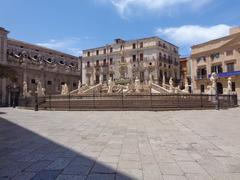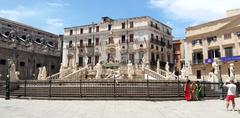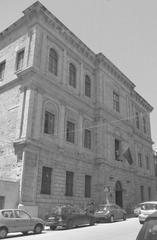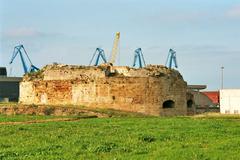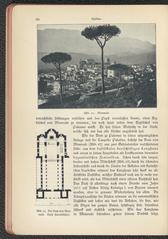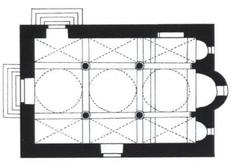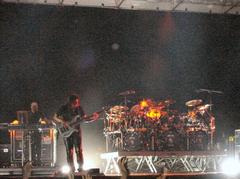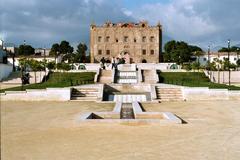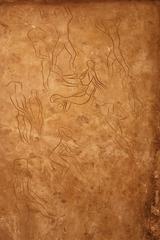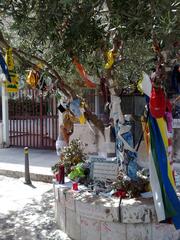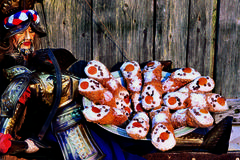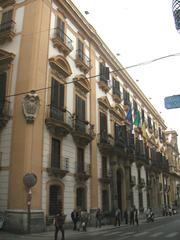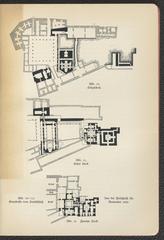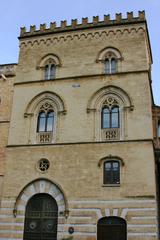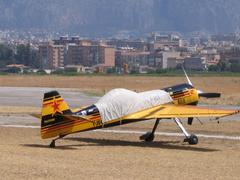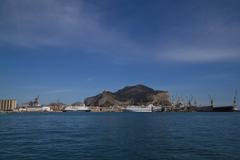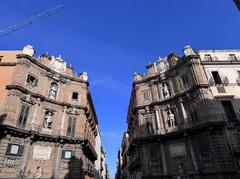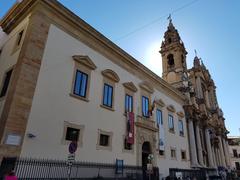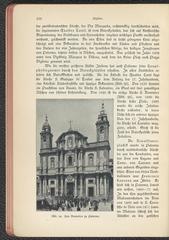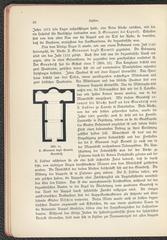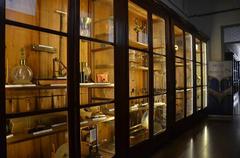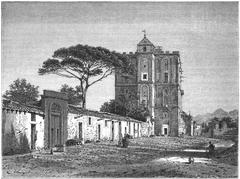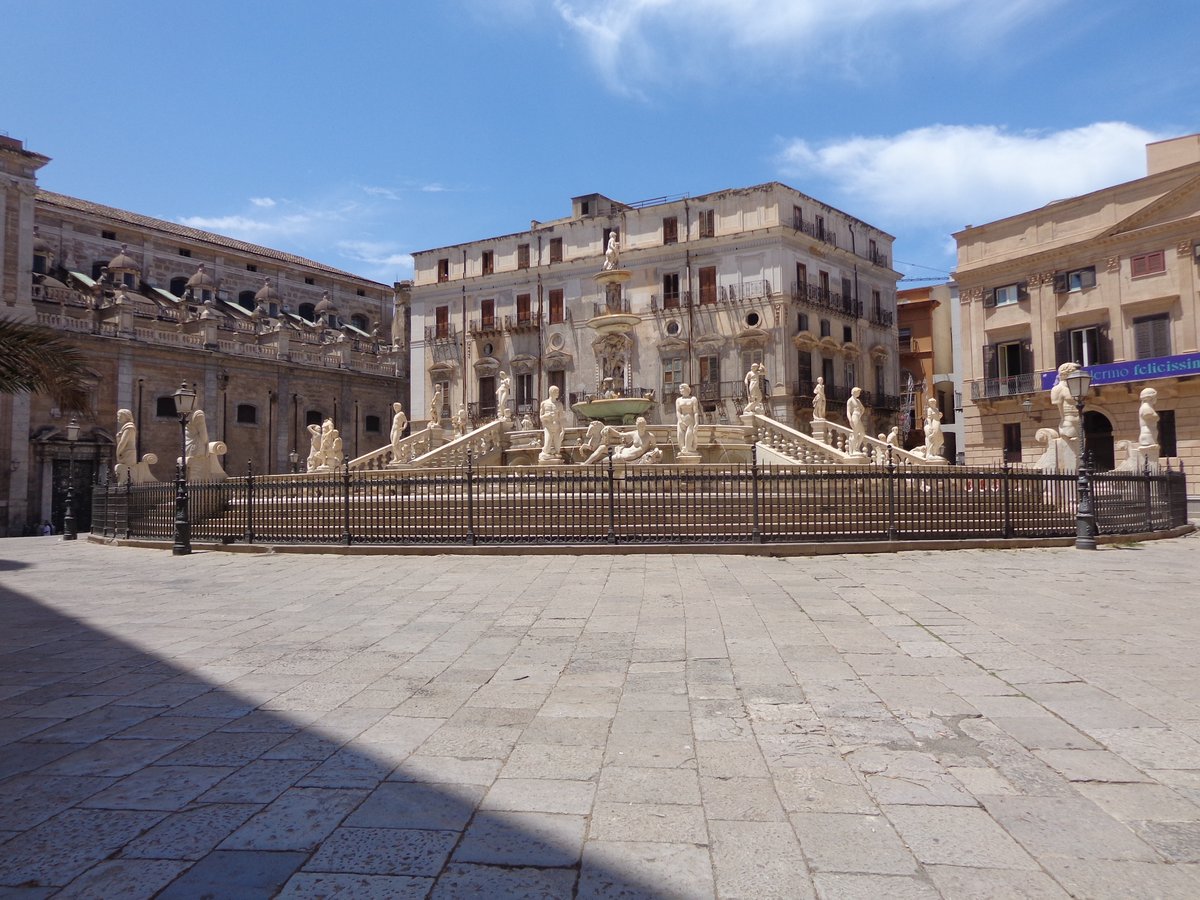
Fontana Pretoria Visiting Hours, Tickets, and Historical Insights
Date: 18/07/2024
Introduction to Fontana Pretoria
Fontana Pretoria, a magnificent 16th-century fountain located in Palermo, Sicily, is often referred to as the ‘Fountain of Shame’ due to the controversial nudity of its statues. This iconic landmark, designed by renowned Florentine sculptor Francesco Camilliani, was initially created for a private garden in Florence before being moved to its current location in Piazza Pretoria, Palermo (Palermo Viva). The fountain’s intricate design, featuring mythological figures, allegorical representations, and an overall aquatic theme, exemplifies Renaissance artistry and humanism. Over the centuries, Fontana Pretoria has evolved from a symbol of extravagance and immorality to one of Palermo’s most celebrated historical sites, drawing visitors from around the world (CoopCulture). In this comprehensive guide, we will delve into the rich history, artistic significance, and practical visitor information to enhance your experience at Fontana Pretoria.
Table of Contents
- [Introduction](#introductionintroduction-to-fontana-pretoria)
- [History and Significance of Fontana Pretoria](#history-and-significance-of-fontana-pretoriahistory-and-significance-of-fontana-pretoria)
- [Origins in Florence](#origins-in-florenceorigins-in-florence)
- [A Controversial Arrival in Palermo](#a-controversial-arrival-in-palermoa-controversial-arrival-in-palermo)
- [Artistic Brilliance and Symbolism](#artistic-brilliance-and-symbolismartistic-brilliance-and-symbolism)
- [Architectural Layout](#architectural-layoutarchitectural-layout)
- [The Inner Circle: Mythological Deities](#the-inner-circle-mythological-deitiesthe-inner-circle-mythological-deities)
- [The Middle Ring: Allegories of the Virtues](#the-middle-ring-allegories-of-the-virtuesthe-middle-ring-allegories-of-the-virtues)
- [The Outer Ring: Animals and Water Nymphs](#the-outer-ring-animals-and-water-nymphsthe-outer-ring-animals-and-water-nymphs)
- [Evolving Perceptions and Modern Significance](#evolving-perceptions-and-modern-significanceevolving-perceptions-and-modern-significance)
- [Conservation Efforts and the Future](#conservation-efforts-and-the-futureconservation-efforts-and-the-future)
- [Visitor Information](#visitor-informationvisitor-information)
- [Visiting Hours](#visiting-hoursvisiting-hours)
- [Tickets](#ticketstickets)
- [Travel Tips](#travel-tipstravel-tips)
- [Nearby Attractions](#nearby-attractionsnearby-attractions)
- [Special Events and Guided Tours](#special-events-and-guided-toursspecial-events-and-guided-tours)
- [Photographic Spots](#photographic-spotsphotographic-spots)
- [Conclusion](#conclusionconclusion)
- [Frequently Asked Questions (FAQ)](#frequently-asked-questions-faqfrequently-asked-questions-faq)
- [References](#referencesreferences)
History and Significance of Fontana Pretoria
Origins in Florence
The fountain’s story begins not in Palermo, but in Florence. In 1550, Don Pedro de Toledo, the Viceroy of Sicily, commissioned the renowned sculptor Francesco Camilliani to create a grand fountain for the pre-existing gardens of his Florentine villa. Camilliani, assisted by a team of sculptors, spent six years crafting the fountain’s intricate components.
A Controversial Arrival in Palermo
In 1574, Don Pedro’s son and heir decided to relocate the fountain to Palermo, a decision shrouded in controversy. The fountain, already partially assembled in Florence, was disassembled, shipped to Sicily, and reassembled in its current location in Piazza Pretoria. This move, however, came at a significant cost, both financially and socially. The fountain’s exorbitant price tag, coupled with its depiction of nude figures, sparked outrage among Palermo’s citizens, leading to the nickname “Fountain of Shame.”
Artistic Brilliance and Symbolism
Despite the controversy, Fontana Pretoria stands as a testament to the artistic brilliance of the Mannerist period. The fountain’s design, arranged in a concentric hierarchy, showcases a complex interplay of mythological figures, animals, and cascading water features.
- Central Figures: At the fountain’s heart, four colossal statues represent the rivers of Sicily - the Imera Meridionale, the Eleuterio, the Belice, and the Gela. These figures, depicted in dynamic poses, symbolize the island’s natural abundance and fertility.
- Mythological Narratives: Surrounding the central figures, a series of smaller sculptures depict scenes from Greek mythology, including the labors of Hercules, the abduction of Europa, and the myth of Actaeon. These narratives, intricately carved in marble, offer a glimpse into the Renaissance fascination with classical antiquity.
- Architectural Harmony: The fountain’s architectural design, characterized by its tiered structure and interplay of curves and angles, harmonizes with the surrounding Piazza Pretoria. The fountain’s presence transforms the square into an open-air theater, inviting viewers to marvel at its artistic grandeur.
Architectural Layout
The fountain’s design is based on a Roman Circus, a design element commonly employed in Renaissance gardens. This layout is characterized by an oval shape, which in the case of Fontana Pretoria, is enclosed by a low balustrade. This design choice creates a sense of intimacy and invites viewers to walk around and admire the fountain from various angles. The oval basin, the heart of the fountain, is divided into three concentric levels, each progressively smaller than the last. This tiered structure adds a sense of depth and dimension to the fountain, making it appear larger than it actually is.
The Inner Circle: Mythological Deities
At the center of the fountain, atop a rocky grotto, stands the imposing figure of Neptune, the Roman god of the sea. He is flanked by two of his mythical companions, Amphitrite and Triton, further emphasizing the aquatic theme. Surrounding Neptune, on the same level, are four river gods representing the Nile, the Ganges, the Rio de la Plata, and the Danube. These figures symbolize the reach and power of the viceroy, extending to the far corners of the known world.
The Middle Ring: Allegories of the Virtues
The middle ring of the fountain is dedicated to allegorical representations of the virtues. These figures, often depicted as female forms, embody concepts such as Abundance, Justice, and Prudence. The inclusion of these virtues reflects the Renaissance emphasis on humanism and the pursuit of moral excellence.
The Outer Ring: Animals and Water Nymphs
The outermost ring of the fountain is populated by a menagerie of mythical creatures and water nymphs. These figures, often depicted in playful poses, add a touch of whimsy and lightheartedness to the fountain. Among them are Tritons, Nereids, and sea monsters, all contributing to the overall aquatic theme.
Evolving Perceptions and Modern Significance
Over the centuries, the initial perception of Fontana Pretoria as a symbol of extravagance and immorality has shifted. Today, the fountain is recognized as one of Palermo’s most iconic landmarks, drawing visitors from around the world. Its historical significance, coupled with its artistic merit, makes it a must-see destination for anyone visiting this vibrant Sicilian city.
Conservation Efforts and the Future
Recognizing the fountain’s cultural and historical importance, authorities have undertaken significant conservation efforts to preserve its beauty for future generations. These efforts include regular cleaning, restoration of damaged sculptures, and the implementation of measures to prevent further deterioration. As a result of these ongoing efforts, Fontana Pretoria continues to captivate visitors with its timeless beauty and historical intrigue.
Visitor Information
Visiting Hours
Fontana Pretoria is accessible to the public 24 hours a day, but the best time to visit is during daylight hours when the details of the sculptures are most visible.
Tickets
There is no admission fee to view the fountain as it is located in a public square.
Travel Tips
The fountain is situated in the heart of Palermo, making it easily accessible by foot or public transport. Consider combining your visit with nearby attractions such as the Quattro Canti and the Church of Santa Caterina.
Nearby Attractions
Piazza Pretoria is surrounded by other historical sites, including the Palermo Cathedral and the Norman Palace. These locations offer a deeper insight into Palermo’s rich history and architectural beauty.
Special Events and Guided Tours
Occasionally, guided tours and special events are organized around Piazza Pretoria. Check local listings or inquire at the tourist information center for the latest updates.
Photographic Spots
The fountain’s intricate sculptures and the surrounding architecture provide excellent photographic opportunities. Early morning or late afternoon light offers the best conditions for photography.
Conclusion
Fontana Pretoria stands as a remarkable blend of history, art, and symbolism. Whether you’re an art enthusiast, history buff, or simply a curious traveler, this iconic fountain offers a captivating glimpse into Palermo’s rich cultural heritage. Plan your visit today and immerse yourself in the timeless beauty of Fontana Pretoria.
For more information on Palermo’s historical sites and travel tips, explore our related articles and follow us on social media.
Frequently Asked Questions (FAQ)
Q: What are the visiting hours for Fontana Pretoria?
A: Fontana Pretoria is accessible 24 hours a day, but the best time to visit is during daylight hours.
Q: Do I need tickets to visit Fontana Pretoria?
A: No, there is no admission fee to view the fountain.
Q: What are some nearby attractions?
A: Nearby attractions include the Palermo Cathedral, the Norman Palace, and the Church of Santa Caterina.
Q: Are there guided tours available?
A: Yes, occasionally guided tours and special events are organized around Piazza Pretoria. Check local listings for updates.
Q: When is the best time for photography?
A: Early morning or late afternoon offers the best lighting conditions for photography.
